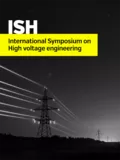Summary
Partial Discharge (PD) assessment has taken an important role in modern diagnostics technics. The continuous growth on energy quality demand of the electrical power system pushed forward the PD measurement technics: online test of power equipment, monitoring and multi-point acquisitions are some of the standard requirements for PD diagnostics. Time-resolved PD signal acquisition at high sampling frequency allows noise suppression by signal post-processing and feature extraction from signals in order to identify different sources of PD, a crucial task in assets diagnostics. In this paper, a comparison between feature space formations based on Discrete Wavelet Transform (DWT) coefficient variance under different wavelet families, for PD signal classification, is presented. To compare their separation capability, three typical PD defects were experimentally reproduced in a laboratory for obtaining independent PD sources. The labeled data is then projected onto different spaces by DWT using two wavelet families: Daubechies and Symlet. A reduction and analysis of these projections is made using principal component analysis, and later, their separation capability is evaluated by the final classification error of a trained multilayer perceptron. The results shows that with this feature space it is feasible to classify different sources of PD signals. Depending on the wavelet basis chosen, different feature spaces are reached, some of them have a better separation capability. This new method might be used as an implement to improve the PD measurement equipment, were multiple PD sources are present or noisy environments might disguise the correct diagnosis.
Additional informations
| Publication type | ISH Collection |
|---|---|
| Reference | ISH2017_405 |
| Publication year | |
| Publisher | ISH |
| File size | 556 KB |
| Pages number | 6 |
| Price for non member | Free |
| Price for member | Free |
Authors
M.U. MAILLOT



